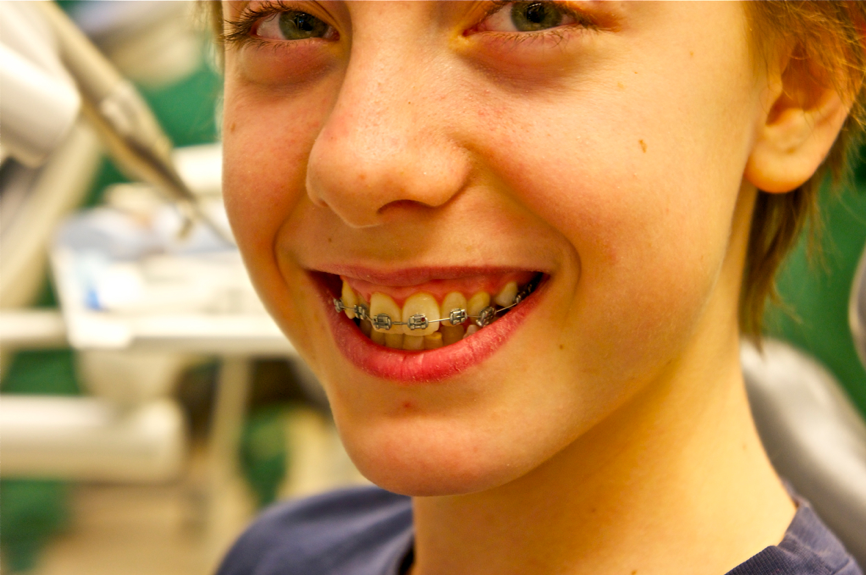Comprehensive Overview to Orthodontics Treatments for Correcting Oral Imbalances
Understanding the details of each treatment, including their systems, advantages, and prospective disadvantages, is essential in making notified decisions regarding one's orthodontic treatment. As we navigate through the thorough guide to orthodontic procedures for remedying dental misalignments, the intricate details of each technique will certainly unravel, shedding light on the path towards a harmonious and practical oral positioning.
Orthodontic Procedures Introduction

In enhancement to standard dental braces and clear aligners, orthodontists might likewise suggest other interventions like headgear, palatal expanders, or retainers to attend to details placement issues (braces). These procedures are tailored to each individual's special needs and might involve a combination of treatments to achieve the wanted results. Normal adjustments and tracking are vital components of orthodontic treatment to make certain development gets on track and to make any type of essential adjustments along the road. By undertaking orthodontic procedures, patients can not just accomplish a straighter smile but additionally enhance their total dental health and wellness and function.
Conventional Braces: How They Work
When considering orthodontic therapies for oral misalignments, typical braces stand out as a time-tested approach for correcting teeth placing. Traditional dental braces are composed of brackets, wires, and bands that work with each other to apply continuous pressure on the teeth, gradually relocating them right into the wanted placement.
One key facet of just how conventional dental braces job is the process of bone improvement. As pressure is applied to the teeth via the braces, the bone surrounding the teeth is improved to sustain the new tooth positions. This improvement is important for the lasting security of the fixed placement. Clients will need normal modifications at the orthodontist's workplace to make sure the dental braces proceed to apply the appropriate pressure for efficient teeth activity.
Undetectable Aligners: Cons and pros
Undetectable aligners provide a hassle-free and very discreet choice to conventional dental braces for remedying oral misalignments. These clear, personalized trays are practically unseen when worn, making them an appealing alternative for people looking for a more aesthetically pleasing orthodontic treatment. One of the key benefits of invisible aligners is their removability, permitting easier upkeep of oral hygiene compared to typical braces. Clients can eliminate the aligners prior to eating or brushing their teeth, lowering the danger of food getting embeded the appliance and streamlining the cleansing process.

Surgical Orthodontic Options
Surgical treatments in orthodontics present practical alternatives for addressing complicated oral misalignments that might not be effectively fixed with conventional orthodontic treatments. While standard dental braces and undetectable aligners can fix numerous orthodontic concerns, particular cases call for surgical intervention to attain optimal outcomes. Surgical orthodontic alternatives are typically advised for severe malocclusions, significant jaw inconsistencies, and cases where the underlying bone structure requires adjustment to accomplish proper alignment.
One typical surgical orthodontic procedure is orthognathic surgery, where can i find a dentist which includes repositioning the jaws to remedy functional problems such as difficulty chewing or speaking. This surgical treatment is often carried out in collaboration with an orthodontist who helps align the teeth prior to and the nearest dentist near me after the procedure. Surgical orthodontics might likewise entail treatments to subject influenced teeth, get rid of excess gum tissue, or reshape the jawbone to create an extra harmonious face account.
Prior to considering surgical orthodontic choices, people undertake an extensive examination to establish the necessity and potential advantages of such interventions. cumming orthodontics. While surgical procedure might seem complicated, it can considerably enhance both the function and visual appeals of the smile in situations where conventional orthodontic treatments fall short
Retainers and Post-Treatment Care

Failure to conform with post-treatment care instructions can result in regression, where the teeth gradually move back towards their original positions. Constant retainer wear, good oral hygiene, and routine oral examinations are important for maintaining the outcomes achieved via orthodontic surgery and ensuring the lasting stability of the dealt with dental alignment.
Final Thought
In conclusion, orthodontic procedures supply different choices for remedying oral misalignments. Surgical orthodontic options are available for extra serious imbalances. In general, orthodontic treatments can successfully boost oral health and wellness and aesthetic appearance.
As we navigate with the extensive guide to orthodontic procedures for correcting oral misalignments, the detailed details of each approach will unfold, losing light on the path towards a practical and unified oral positioning. - braces
One of the most typical orthodontic treatments is the usage of dental braces, which are composed of metal braces and cables that apply mild pressure to gradually shift teeth right into the preferred placement.When thinking about orthodontic therapies for dental misalignments, typical braces stand out as a tried and true technique for dealing with teeth positioning. Furthermore, invisible aligners may not be appropriate for intricate orthodontic issues that require more substantial teeth movement, as they are normally advised for mild to moderate situations. Retainers are personalized orthodontic devices designed to hold teeth in their fixed placements after the conclusion of orthodontic therapy.